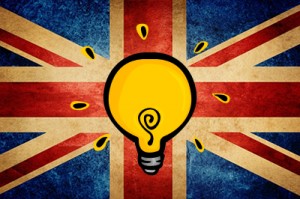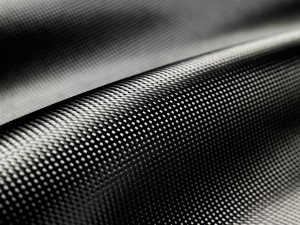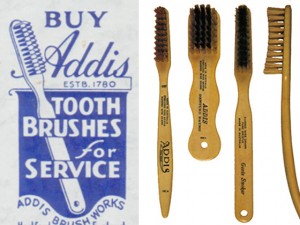Great British Inventions
 The British have always been an innovative and inventive nation. Just how inventive may surprise you. In this article we look at just four of the inventions that Britons have made without which, life today would be very different indeed. As you’ll see whilst we are an inventive lot, when it comes to marketing of a good idea we’re not so successful and it’s usually other nationalities who commercialise these great inventions.
The British have always been an innovative and inventive nation. Just how inventive may surprise you. In this article we look at just four of the inventions that Britons have made without which, life today would be very different indeed. As you’ll see whilst we are an inventive lot, when it comes to marketing of a good idea we’re not so successful and it’s usually other nationalities who commercialise these great inventions.
The Electric Telegraph
| INVENTED : | 1837 |
| INVENTORS : | CHARLES WHEATSTONE AND WILLIAM COOKE |
 The electric telegraph was a world-shrinking technology like no other. The first working system was demonstrated in 1837 by the British physicist Charles Wheatstone and his young engineer partner, William Cooke. The first fully operational telegraph ran from 1839 between Paddington and West Drayton railway stations in London, but at first it was slow to catch on. That is until New Year’s Day, 1845. John Tawell, who had just murdered a lady of his acquaintance, jumped on a train at Slough and made his getaway. But when the police arrived, the station clerk was able to telegraph Paddington, where Tawell was arrested when his train pulled in. It was a sensation, and from here on the technology exploded. Morse Code made it efficient; telegraph cables were soon everywhere – in 1858 the first transatlantic cable was laid – and by the end of the centurv there were more than 150,000 miles of cable connecting the globe.
The electric telegraph was a world-shrinking technology like no other. The first working system was demonstrated in 1837 by the British physicist Charles Wheatstone and his young engineer partner, William Cooke. The first fully operational telegraph ran from 1839 between Paddington and West Drayton railway stations in London, but at first it was slow to catch on. That is until New Year’s Day, 1845. John Tawell, who had just murdered a lady of his acquaintance, jumped on a train at Slough and made his getaway. But when the police arrived, the station clerk was able to telegraph Paddington, where Tawell was arrested when his train pulled in. It was a sensation, and from here on the technology exploded. Morse Code made it efficient; telegraph cables were soon everywhere – in 1858 the first transatlantic cable was laid – and by the end of the centurv there were more than 150,000 miles of cable connecting the globe.
It’s worth noting that Thomas Edison claimed he invented the telegraph, but as with many of his claims (see below), this is far from the truth. Edison it seems was a master of appropriation of other peoples ideas. He was also a shrewd marketing man which is why even today people still wrongly attribute many seminal inventions to him.
The Light Bulb
| INVENTED : | 1878 |
| INVENTOR : | JOSEPH SWAN |
Cheap and reliable electric lighting was a holy grail for 19th-century inventors. But didn’t Thomas Edison get there first? NO! He was beaten to it by Britain’s very own Joseph Swan, working out of his private lab at his house in Gateshead. Swan invented it and patented it in 1878 when he also started manufacturing and selling his bulbs. He developed a tiny filament that used specially treated cotton, and set it inside an oxygen-free vacuum so that it wouldn’t catch fire when it glowed white-hot.
Swan’s first bulbs lasted little more than 12 hours but, unlike gas lamps, there was no flame or dirt) smoke and they soon caught on. The impresario Richard d’Oyly Carte seized the opportunity to make his new Savoy Theatre in London stand out – and when it opened the following year it was the first public building in the world to be lit electrically throughout. ID’Oyly Carte even took to the stage himself – holding a glowing bulb aloft, he ceremoniously broke it in front of the audience to prove it was safe.
Carbon Fibre
| INVENTED : | 1963 |
| INVENTORS : | ROYAL AIRCRAFT ESTABLISHMENT ENGINEERS |
 This marvellous material is one of many inventions developed by the military that are incredibly useful for us all. In 1963, engineers at the Royal Aircraft Establishments research station at Farnborough worked out how to reinforce plastics with carbon filaments to produce a material that was strong, lightweight and could be mass-produced.
This marvellous material is one of many inventions developed by the military that are incredibly useful for us all. In 1963, engineers at the Royal Aircraft Establishments research station at Farnborough worked out how to reinforce plastics with carbon filaments to produce a material that was strong, lightweight and could be mass-produced.
Early on, there were setbacks – carbon fibre was used for the turbine blades for the Rolls-Royce RB-211 jet engine, but the lightweight blades just weren’t strong enough. They failed the bird-strike test – they shattered when a frozen chicken was fired into them at high speed – and the engine had to be scrapped at huge cost. But the inventors at Farnborough found other uses for the material and today the material has thousands of applications in boats, cars, motorbikes, sports equipment, and even in the fuselages of jumbo jets.
The Toothbrush
| INVENTED : | circa 1770 |
| INVENTOR : | WILLIAM ADDIS |
Such a simple thing, it’s hard to believe it was only in 1770 that it was invented. But it was and again it’s thanks to a British inventor that trips to the dentists today are fewer than ever.
 William Addis was a rag trader who got caught up in a riot in 1770 and was sent to Newgate Prison. While there, and with time on his hands, he felt that the way most people were cleaning their teeth, which was to rub soot and salt over them with a rag, could be improved on. Possibly inspired by the design of a broom, he saved a small animal bone left over from a meal and drilled small holes in it. Then he obtained some bristles, tied them in small tufts and poked them through the holes. He glued it all together and – hey presto – a toothbrush.
William Addis was a rag trader who got caught up in a riot in 1770 and was sent to Newgate Prison. While there, and with time on his hands, he felt that the way most people were cleaning their teeth, which was to rub soot and salt over them with a rag, could be improved on. Possibly inspired by the design of a broom, he saved a small animal bone left over from a meal and drilled small holes in it. Then he obtained some bristles, tied them in small tufts and poked them through the holes. He glued it all together and – hey presto – a toothbrush.
After his release, Addis set up a business in 1780 to make what became the world’s first mass-produced toothbrushes. They made him very rich. Cheap brushes used pig bristle; more expensive ones badger hair. His company, Wisdom Toothbrushes, is still going strong today, though it now uses plastic and nylon.
Check out our other articles in the ‘Great British Inventions’ Series :






You must be logged in to post a comment.